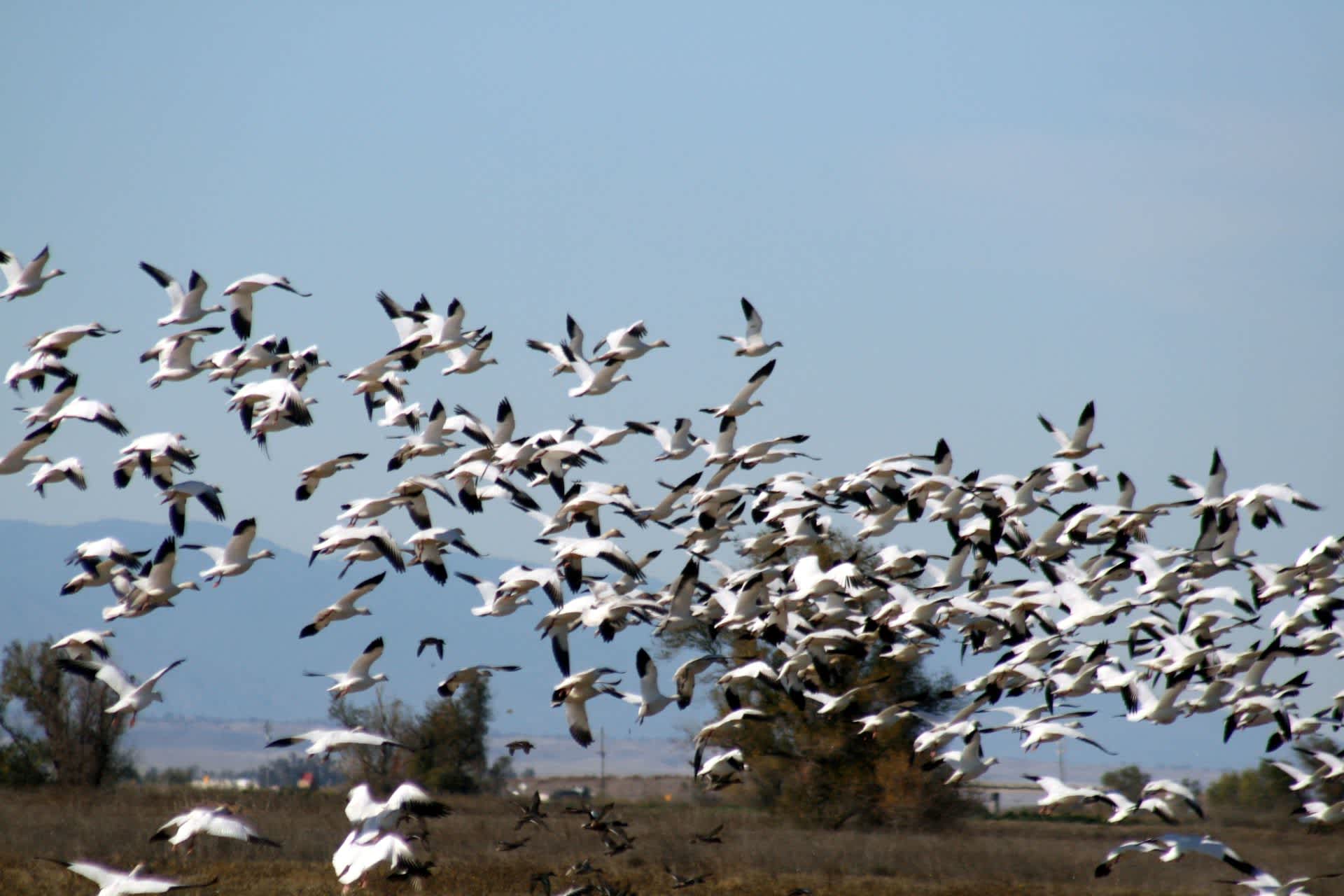Why Did Thousands of Snow Geese Drop out of the Sky over Idaho?
OutdoorHub Reporters 03.17.15

Should you duck and cover?
Idaho wildlife officials have confirmed that thousands of migrating snow geese are being found dead across the state, seemingly dropping straight out of the air. The carcasses were first discovered at Camas National Wildlife Refuge near Dubois last week, but soon spread to the towns of Terreton and Roberts, where birds on the return leg of their journey to Alaska have collapsed and died. The migration is one that the geese undertake every spring, so why are they dropping dead now?
Biologists with the Idaho Department of Fish and Game (IDFG) suspect that the cause of mortality is avian cholera. Over the weekend, IDFG employees and volunteers visited the sites with the highest mortality to collect the birds for incineration. Although lab results have yet to confirm avian cholera as the cause of the recent deaths, biologists say that visible symptoms on the carcasses seem to indicate the disease. Avian cholera is caused by infection with the bacteria Pasteurella multocida, which can kill as swiftly as 6-12 hours after infection. According to the US Geological Survey, avian cholera is the most lethal and potentially dangerous infectious disease to wild birds in North America, and can easily kill thousands of birds in a single outbreak. Death is so rapid that “birds literally fall out of the sky” or at resting grounds with no prior signs of disease.
Fortunately, humans are not very susceptible to infection. Wildlife officials are now attempting to collect as many diseased birds as they can to prevent spread of the bacteria to other animals, especially wild birds. Biologists are especially concerned that a group of 20 bald eagles near Mud Lake may have been exposed to the bacteria, possibly while scavenging dead birds. Experts have yet to determine where the snow geese may have contracted the bacteria from. At least 2,000 birds have been reported dead so far.
Symptoms of the infection include convulsions, erratic swimming, flying upside down, and mucous discharge from the mouth. Roughly half of snow geese who contract avian cholera will survive and become carriers, allowing the disease to track geese along traditional migration routes.

